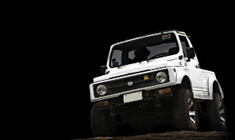News
I installed wheel spacers on my Ford Endeavour; What's your opinion?
I wanted to understand from fellow BHPians on what their experience is on adding a wheel spacer is
BHPian dhanushs recently shared this with other enthusiasts:
Wheel spacers are probaly the most polarized among modifications. The aggresive stance and added advantages of having bigger tyres and clearances make some people love it and some are really scared of it, and have some bad experience with sub par quality and engineered spacers. Different OEM's have designed their suspension geometries in different ways and the effect of the wheel spacer on each vehicle is different.
Even though, being from the Auto Industry myself, I couldnt just resist adding a set of spacers in my car - Just to see the way it looks.
Without Spacers.

With Spacers. 

Ford Endeavour with wheel spacers
I added 32mm spacers to my car just to have the wheels come out slighty.. for the looks. . However, there was some dynamics and steering feedback changes noticed.
I have felt my steering to become sligthly heavy, particularly in low speeds. Basically the steering torque has become heavier. The feedback has improved but the kickback has slightly worsened. On the handling front, it has improved - more planted feel. Roll has reduced.
What is your experience with the spacers? How has it affected the driveability & looks of your car?
Here's what, BHPian freelancer6202 added to the discussion:
Definitely wouldn't suggest spacers for long term. Steering and handling is affected. An added point of failure. For a daily/long running, absolutely avoid them.
Meanwhile, BHPian Jeroen said this regarding the question:
Wheel spacers on regular cars are for looks only and never for performance IMO.
It creates some additional load on the suspension and wheel bearing as it introduces an extra “arm” and thus torque. Whether that is an issue, depends on many factors. In practice not sure if you would notice additional wear.
The biggest downside is, as you found out, is impact on performance. And it is never positive. More torque and kickback and feedback shows the extra forces working on your suspension.
Jeroen
Check out BHPian comments for more insights and information.
- Tags:
- Indian
- Ford Endeavour
- Car mods
News
India-spec Ford Endeavour could get a 3.0L V6 diesel engine
The Endeavour V6 will compete with rivals like the Toyota Fortuner in India.
We have been hearing reports of Ford making a comeback into the Indian market with the new Endeavour since last year. While the exact date of its launch is still not clear, the latest reports suggest that the SUV could be offered with multiple engine options.
It is said that Ford is likely to assemble the Endeavour in India and source the 2.0-litre diesel engine from its Sanand plant. However, a larger 3.0-litre V6 diesel that is currently manufactured in South Africa could also be on offer on higher trims.
This 3.0-litre V6 features dual overhead camshafts and uses a variable nozzle turbocharger, a fully counterweighted crankshaft. It has a compression ratio of 16:1 and produces 247 BHP @ 3,250 rpm and 600 Nm @ 1,750-2,250 rpm. It even comes with an engine block heater.
Ford’s 3.0L V6 diesel engine does duty in the Ranger and F150 pickup trucks. Reports suggest that it will enable Ford to compete with rivals like the Toyota Fortuner in India.
Source: Autocar India
- Tags:
- Indian
- Ford Endeavour
- Endeavour
News
Life with a 2021 Ford Endeavour 2.0 AT: 3.5 years and 53k km later
The main positive of this beast is its engine, which is not overpowered or sluggish by any means and felt adequate to move the 2 ton car and can cruise at triple digit speeds all day long.
BHPian The VAG32 recently shared this with other enthusiasts:
My Ford Endeavour 2021 2.0 AT has done 52k kms within 3.5 years and I would like to share my ownership experience and positives and negatives of the vehicle so far.
Back to 2021
We were searching a car for my dad who loves driving a lot. Our previous cars were a type 1 Toyota Innova, VW Vento 1.6 TDI, Renault duster AWD. The current car should be a true SUV and should tackle bad roads with ease. We fixed a budget of 35 to 45 lakhs and began our search.
Cars Considered
1.VW Tiguan 2.0 TSI: We went and test drove the last batch of the pre facelifted tiguan and was blown away by the performance of the 2.0 TSI paired with DSG. It was truly a drivers delight,but the suspension seem to be bit stiff and found the thirdrow in the allspace version to be useless. The dealership gave a discount of 4 lakhs for the pre facelifted allspace variant.
Overall the car seemed to be damn good to drive, but lack of space and overall small dimensions made us to look for other options.
2.MG Gloster Biturbo Savy 4WD:Again this seems to be a good option. We went to the showroom and saw the car "boy its huge". The car was loaded with tech and the captain seats offered great comfort making it a good mile muncher. The engine was smooth and powerful enough. But we felt the sheer size of the car will be difficult to maneuver in the city and left the option.
3.Toyota Fortuner 2021 AT:The Fortuner seemed to be the default option for anyone looking for an suv in this segment. I went and test drove the car. The main positive of the car is the engine with 500nm torque on tap. The engine was extremely peppy to drive and builts up crazy speeds in no time and the additional reliability factor. Me and my family didnt like the bouncy nature of the car and the ride was pathetic. The interior didnt do justice to a 45 lakh car
and so we moved on
4.Ford Endeavour 2.0 AT:I heard from someone that the 3.2 5cyl unit was discontinued and Ford had launched new endeavour with 2.0 panther series engine with 168hp and 420nm of torque with a 10speed AT. We gave it a final try. We were blown away by the ride quality it offered and the handling at high speed. My family also loved the beige interiors and the muscular stance of the car, So we went ahead and booked the titanium plus 4wd variant which costed 42.3 lakhs on road (was not interested in the sport variant which costed 42.7 lakhs on road, a whopping 40k just for cosmetic upgrade). The car got delivered exactly after one month on May 2021.
Engine and Transmission: The car is powered with 2.0l panther engine by ford producing 168hp and 420nm of torque. It may not seem to be lot to move this mammoth, but suprisingly its adeaquate enough. Its neither overpowered nor underpowered and its faster than the 2.2l and 1.5 seconds slower than the 3.2l. The true magic lies in the 10speed torque convertor AT and it is tuned beautifully to mask the turbolag of the engine. The shifts are smooth and wont feel anything and its beautiful to drive especially on the highway. The initial response from the engine is too good and it pulls cleanly upto 160kmph and the progress dulls after that. So, its amazing to drive within legal speeds.
The 10speed AT is a bit confused especially when driving within city limits. The gearbox skips the gears( downshifting from 9th gear to 3rd gear in case of an overtake) making the engine in its powerband at all the time. The engine is refined too and wont hear a thing at lower rpms. Its only when the engine crosses 2500rpm it becomes audible and the growl can be felt in the cabin.
Ride Quality:The ride quality needs a special mention here. The suspension is tuned beautifully to tackle all the bad roads and its one of the most comfortable suv in the segment. The low speed ride is a bit stiff and just moves around a bit ( Typical lumpiness of a ladder on frame suv)
Handling:One of the best handling suv in the segment. The steering is pretty responsive and it is way too light in the city speeds and weighs up well at high speeds. It is not as responsive as the previous gen Fords but its way more responsive than the competition. It tackles corners with ease and bodyroll is well controlled (by suv standards). The stability is awesome and the cabin isolation is just fantastic.
Interior and Quality:The seats are made up of really highquality leather. The interior and dashboard has soft touch plastic with high quality leather wrapped around. The interior feels age old, but made up of high quality materials and made to last forever.
Service and maintenance:The Ford Service has been great so far and no issues at that front. The car has done 3 free services and 4 paid services so far. The customer experience is good and affordable too.
Accessories:
1.The car came with Fiamm trumpet horn as stock and I got changed them to Roots Megasonic.
2.I installed 3M CR70 sunfilms all through out the car including the front windshield.
3.The stock speakers are just pathetic and I got it replaced with Morel maxximo components both front and rear powered by Infinity 4 channel amplifier.
Positives
1.The main positive of this beast is its engine, which is not overpowered or sluggish by any means and felt adequate to move the 2 ton car and can cruise at triple digit speeds all day long.
2.The 10 speed torque convertor is a gem in its own way and keep the engine in its boil at all the times and masks the turbo lag beautifully.
3.The cabin insulation is just brilliant and the materials used in the interior are of pretty high quality that I havent felt in any sub 50 lakh car.
4.The ride quality is just amazing and it just glides over everything.
5.The highspeed stability is fantastic and cruising at 120kph feels like 80kph and the motor will be spinning at 1800rpm at 10th gear and it makes it pretty efficient too.
6.There is always enough power on tap for overtakes and the gearbox downshifts beautifully based on the throttle inputs.
7.The AC is a chiller and cools the cabin in no time.
8.I am getting a fuel economy of 11 to 12 km/l which is pretty acceptable for a vehicle of this size.
9.The car handles beautifully by SUV standards and you can take corners at a good speed and the bodyroll is well controlled.
10.The Ford service is good and way more affordable even after their exit
from India
Negatives
1.Low speed ride is just a little bumpy typical of a ladder frame SUV.
2.I found it a bit difficult initially to get used to the size of the vehicle, but not anymore. Still its difficult to drive in traffic.
3.The Check Engine light glowed up a couple of times and got the catalytic convertor replaced.
4.Overtaking slow moving traffic needs a bit of planning and one has to be aware of the size of the vehicle while doing high speed maneuvers.
5.The 10speed AT is a bit confused at times especially while driving in the city.
6.The rear seat space is just okay and the underthigh support is lacking.
7.The thirdrow can be used only by kids.
Upgrades to be done:
1.The stock MRF wanderers have worn out completely and should replace them with Yoko geolanders or Conti cross contact AT.
2.I saw a dechromed black ford endeavour yesterday and it looked amazing and it triggered me to dechrome my car too. Hope this happens in the near future.
Cars like these are not made anymore and nowadays one has to spend close to 60lakhs in order to get a true suv without any compromise.
Overall I am pretty much happy with my purchase after 3.5 years and continue to keep the car as long as possible.

Check out BHPian comments for more insights and information.
News
Dream road trip to Tibet in my Thar along with 8 other off-roaders
The convoy included 4 Mahindra Thars, 2 Toyota Hilux-es, 1 Maruti Jimny, 1 Ford Endeavour and an Isuzu V-Cross.
BHPian robimahanta recently shared this with other enthusiasts:
It was always a dream to drive my Thar to Tibet and after a lot of planning and with the help of some good friends I was able to do it this year along with a group of 8 other off-roaders from 1st of June,2024. Since this drive involved extensive driving and crossing multiple international borders, I carried minimal baggage and didn't even carry a camera. All images shared are with the phone.
The convoy included 4 Thars, 2 Hilux-es, 1 Jimny, 1 Endeavour and a V-Cross.
I started from Bangalore early morning at 4am and reached Nagpur around 6pm in the evening after an uneventful drive on Day 1.
We stopped for lunch at the Food Pyramid near Kurnool.

Dinner in Nagpur at Puransingh Dhaba

Day 2, I headed to Prayagraj after breakfast near Lakkhangaon.
Paratha breakfast

Entering Prayagraj
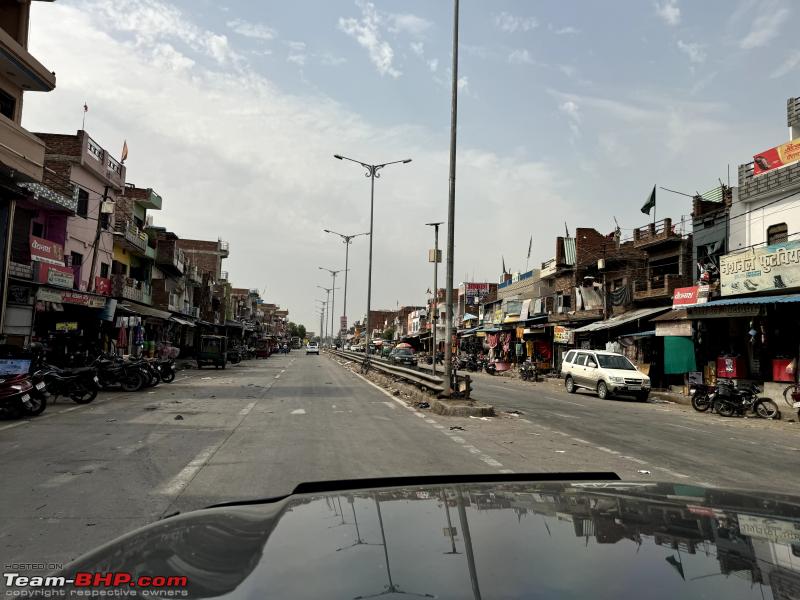
Parked in a lane for the night
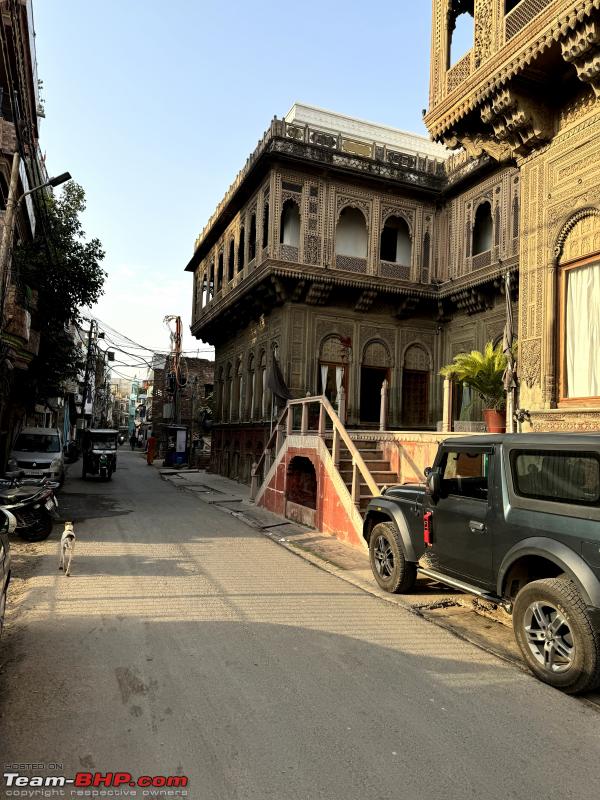
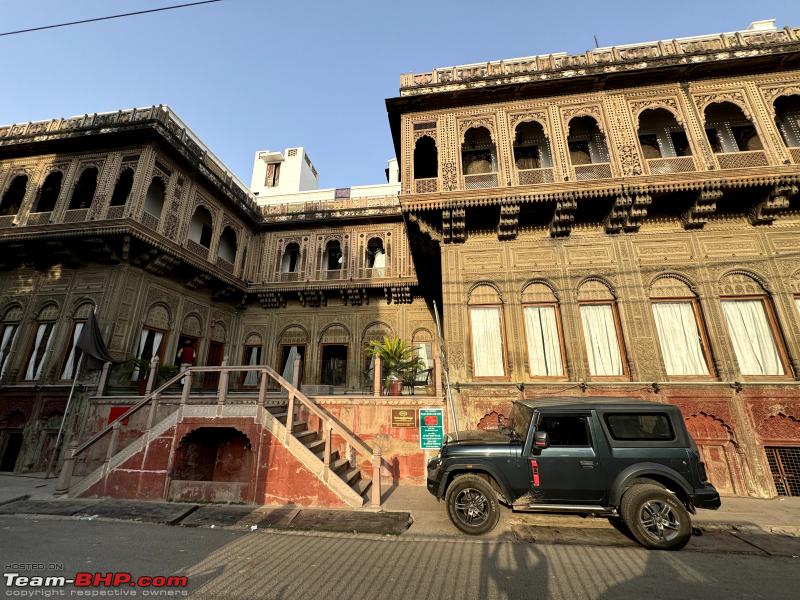
Lovely old Haveli hotel

Views of the holy river

Random mural

Choti Kothi

Ganga Aarti

Sangam madness

Picking up some dinner

Day 3, we reached Gorakhpur via Ayodhya.
Chaos near Ram Mandir, Ayodhya


The Gorakhpur temple



CM's residence

Day 4 was the start of the actual trip. We started in the morning from Gorakhpur and entered Nepal via the Sanauli border. The paperwork took some time while we enjoyed a lovely Nepali thali
Entering Nepal

Immigration

Lunch stop at the Nepal border

Tasty thakali thali

Drove on to Chitwan for the night across one of the worst sections of the road during the entire trip. Progress was painfully slow in Nepal.
In Chitwan, Nepal


Chitwan river vista

Next day, we drove to Kathmandu and had an extra day there for sightseeing as well as last-minute preparations before crossing over to Tibet.
Roads improved as we headed out from Chitwan towards Kathmandu

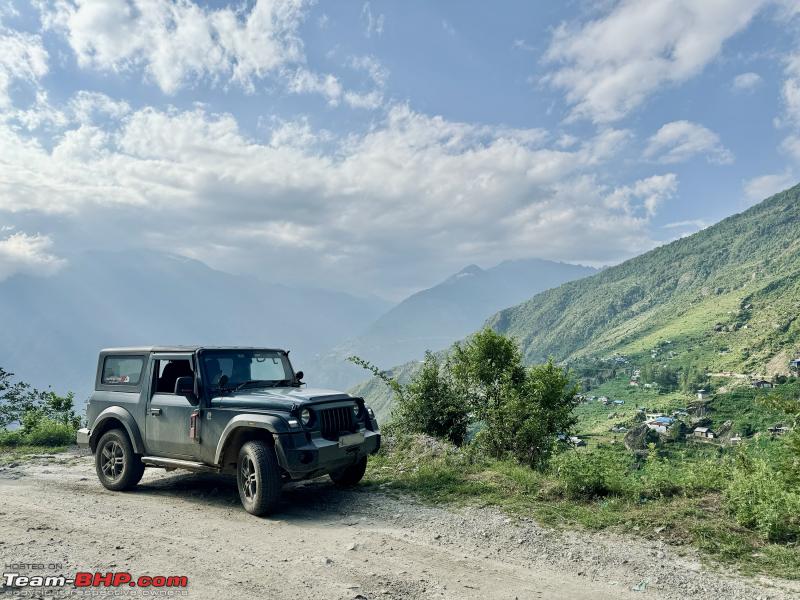
Each turn was photo-worthy


Local Kathmandu sights.
Streets of Thamel

Chandragiri Hill ropeway

Durbar Square

Decided to take an early morning mountain range viewing flight to check out Mt. Everest. It turned out to be a clear day with great views. It costs around 8k and I would definitely recommend it.
Boarding the flight

Mount everest, Lhotse, Makalu
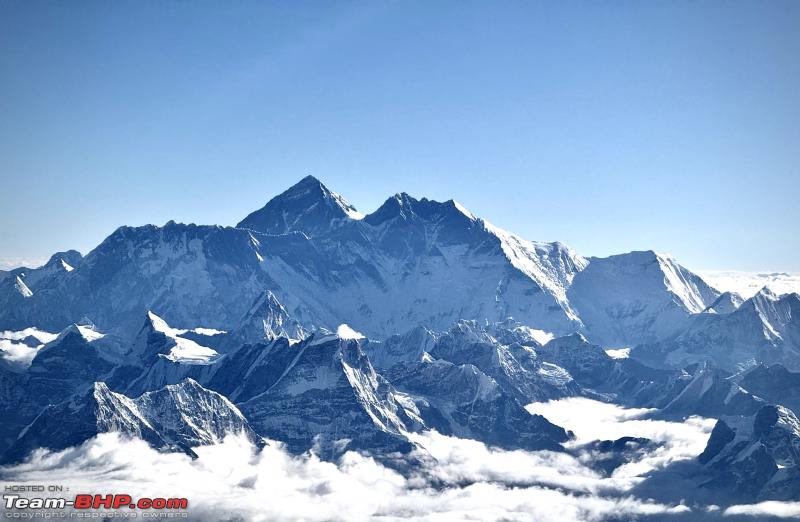
Gauri Shankar

Lovely peaks

Another amazing Nepali Thali

Fake Red Bull

The next day we drove down through broken roads and slushy corners to Syapru Besi to be close to the Tibetan border (so that border control is convenient the next day)
Parked in a guest house at Syapru Besi

A nice river next to the guest house


Continue reading robimahanta's road trip for BHPian comments, insights and more information.
News
What makes a car an 'SUV' in the Indian context & is it justified?
Do you guys think it fair to call the likes of the Exter, Taigun, X1, Creta an SUV?
BHPian thirdmainroad recently shared this with other enthusiasts.
With the current craze in India for “SUV’s” loads of cars are being marketed as SUVs. It got me thinking - what really is an SUV? While the moniker has always been a loose term, with no generally accepted definition - it still feels wrong to brand almost every non sedan car in India an SUV.
I mean - can the Hyundai Exter, for example - a tiny little car with a 1200cc engine, 114 nm torque, 80 bhp with 0 off-roading capabilities really be labeled an SUV?
Or even the Taigun / Kushaq for that matter - 0 off roading.
We in India seem to have made everything that’s not a sedan and has even slightly raised seats a “SUV”
I think a SUV should have at least a 4 wheel drive and have some off road capabilities, and should be worthy enough of scaling some rough terrain.
Do you guys think it ok to call the likes of the Exter, Taigun, X1, Creta an suv or should we call a spade a spade - and acknowledge that car manufacturers are using .. slightly unethical marketing techniques and branding vehicles that are not suvs, suvs?
Here's what BHPian revsperminute had to say on the matter:
Not based on any science but to me-
Exter/Punch, Sonet/Venue and Creta/Seltos segment- Hatchbacks on stilts
Compass/Harrier/XUV700/Tucson/Tiguan/Evoque/Velars/Macan- Crossovers
Fortuner/Endeavour/Isuzu/Thar/Scorpio/Wrangler/Defender/Land Cruiser- SUVs
X5/GLE/X7/GLS/Range Rovers/Cayenne- Somewhere between Crossovers and SUVs
I feel the SUV tag is essential to sell a car in any segment nowadays and hence we are seeing the onslaught of these new body types. And not to forget, an SUV costs the same money to build and sells for a higher price.
Here's what BHPian Sensible_speed had to say on the matter:
I thank you from the bottom of my heart for starting this thread. The question you have posed here has troubled me for oh so long! What is an SUV really? From what I've heard, SUV in the early days used to stand for Sport Utility Vehicle. I don't know where that name came about, but I assume it had something to do with people with an active lifestyle, i.e., carrying skiing, surfing, cycling equipment into some remote region to enjoy these activities.
But today, SUV has become synonymous with a jacked up vehicle, that looks large and hence, safer and more appealing to the masses, irrespective of its ability to actually be utilitarian. Also, perhaps its the manufacturers that are trying to pull a fast one on the masses by these cleverly mislabeling what are clearly crossovers, as SUVs. Every single car you've mentioned in your post should truthfully be called a crossover. But, that term has earned a fairly negative reputation for being used by mothers on a school route.
In the Indian context, the answer to why "SUVs" are popular is simply- ground clearance. Roads in India are perceived as atrociously poor, and it's true to a large extent. This means people want to play it safe by getting a car that can clear the large craters, potholes and poorly designed speedhumps without damaging their cars. This is perhaps the most practical reason for buying an SUV. I suspect VW and Skoda caught onto this trend quickly and offered high ground clearance on the Virtus/Slavia sedans. That may be another reason why they still manage to sell decent numbers.
The next reason is a bit murkier. Image. With cars still being aspirational to the majority, having a car that also looks the part is a huge reason why SUVs have taken off. Imagine spending a couple of lakhs more, and getting a much larger and imposing looking vehicle. This enamours people to stretch their budgets to the SUV instead of a sedan, or an equivalent hatchback.
The last reason that just makes sense to me, is the seating position. When you sit in an SUV, you are perched a few inches higher off the ground than the equivalent sedan or hatchback. This, paired with a larger glasshouse, offers you a better view of the road and your surroundings. A lot of drivers in our conditions prefer this, factoring the chaos on the roads around us.
To sum it all up, I guess "SUV" is a term that is deceptively used by car companies to push for higher sales. In the process, they have intentionally or inadvertently, changed the definition of the term from being a go-anywhere lifestyle product, to a segment/class of vehicles that offer all of what I described above.
Here's what BHPian smartcat had to say on the matter:
They are calling it SUV, not SOV (Sport Offroading Vehicle). The keyword here is utility, not offroading. Their unique selling proposition is indeed utilitarian (high GC/high seating), which are core features of an offroader (eg: Jimny)
After all, the so called "proper SUV" (eg: Fortuner) too is an on-road vehicle, which just incorporates more features of an offroading vehicle. Go far enough on a tough offroading course, and every vehicle will eventually get stuck. It's just that each vehicle type (sedan/pseudo SUV/proper SUV/offroader) will get you farther.
But I don't get the 'Sport' bit though
CUV makes more sense -> Compact Utility Vehicle, anybody?
Here's what BHPian Nalin1 had to say on the matter:
Who cares if it is a genuine SUV or a duplicate one as long as it serves each one's purpose.
When I crossed Hosur road river last week after the torrential rain, I just smashed through without any hesitation on the Nexon with 209 mm of ground clearance when many Sedans and hatches were hesitating.
From the driver's seat, I get a great view of the circus around.
When a Rakshas like a Fortuner or an Endeavour lines up beside, I turn around and can see the driver eye to eye from a sub 4 meter sub compact crossover branded as an SUV .
Not to mention the respect people give when they see a butch looking car (hatch on stilt, jacked up, whatever).
Here's what BHPian IshaanIan had to say on the matter:
I don’t think anyone is being fooled if car makers are even found guilty of false advertising because everyone knows what they can and can’t go off road in. Infact here in India with half our driving populous undeserving of a license, everyone is a little too cautious about the terrain their vehicles can handle. The number of high gc vehicles I see crawling to a standstill at the slightest rumble strip or puddle is testament to the fact that no one is being fooled into thinking they are buying an SUV. They just want the high seating position so that they can avoid scraping and bumping into the objects they still somehow manage to.
If you or anyone else you know is still being mislead by manufacturers labelling their boxy hatchbacks on stilts as SUVs then perhaps a refresher driving course is due.
Read BHPian comments for more insights and information.
News
Struggling to upgrade from my Endeavour: Is the X3 m40i a good option?
Please note that performance car is not my primary look out except that I have been offered one in my price range.
BHPian Wanderers recently shared this with other enthusiasts.
I sold my 3.2L 4X4 Endeavour in January-24 and ever since have been looking for suitable replacement. While I am open to all options starting from Jeep Compass, Fortuner, X1, XC60 but off late it has come down to three- GLC (petrol) X3(diesel) and discovery sport (petrol)
Discovery Sport

The facelift discovery sport with new dashboard and pivi pro screen looks great but minimalistic. One need to use it to appreciate. They have done the best utilisation of touch and hold function giving multiple options instead of browsing.
Also this car gives the true feeling of SUV with commanding view and off road capabilities including transparent bonnet which is far far superior than Mercedes (it works even at higher speed unlike Mercedes)
At Rs 77.5 lakhs on road, this is very competitively priced with respect to others in the list. Just remember the recent price reduction is on account of slight strip down as we now have SE trim instead of HSE. Also no discount except some exchange or Tata employee referral- Rs 40K
Downside discovery sport suffers from feeling of being too old and badly needing a generation change. Also while it is cheapest of all Land Rover’s, things are pretty expensive during service or extended warranty. So these are the major deterrents and I have put it aside for time being. Also I am very clear- No great discount, no purchase (thanks to Amazon)
Mercedes GLC
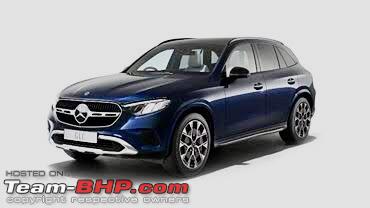
The new GLC 300 is fun to drive with great interior and overall well packaged. It certainly drives better than X3 20d (take test drive to believe it) The sound system is mind boggling and class apart in comparison to other two.
What more it comes with attractive discount. Initially the good discount was only on MY23 cars but from April same is also available on MY24 cars.
Downside, the service, accessories and extended warranty are very costly and look wise not exactly a SUV. The seating position is more car like than a SUV. Also I am not great fan of all touch only controls.
BMW X3 20D/M40i

I love Xs, all the way from X1 to X7, so even though X3 is only available in diesel I was willing to take a plunge provided I get good discount. Well there are discounts which makes it cheapest of all three here but not with a great margin to jump for. Also my love for X was put to test as I really did not feel great while driving 20d in comparison to other two. The ride was bumpy and did not manage a good drivers view and car did not look planted to road which was very much in GLC. Overall it was a disappointment.
Then came a twist when the dealer saw that I was not keen on diesel, they offered a X3M40i at a whopping discount, which brings the X3 M40i in range, something I can consider although it was still high as such.
The car is CBU with manufacturing date (as per VIN decoder) May 23 and made in US plant. The car is currently put as display and has done only 22 km on odometer. There is nothing which looks old or bad about the car. As per VIN all the features mentioned in brochure are present. Also this is not a test drive car as I have seen the same as different.
I plan to keep the car for 7-8 years and accordingly invite fellow BHPians for their views and recommendation between GLC and X3 M40i. Any other suggestions also welcome.
Please note that performance car is not my primary look out except that I have been offered one in my price range. Also I will be driving this car to mountains, off beat locations and bad roads but not off road exactly.
Here's what GTO had to say on the matter
I love Xs, all the way from X1 to X7, so even though X3 is only available in diesel I was willing to take a plunge provided I get good discount. Well there are discounts which makes it cheapest of all three here but not with a great margin to jump for. Also my love for X was put to test as I really did not feel great while driving 20d in comparison to other two. The ride was bumpy and did not manage a good drivers view and car did not look planted to road which was very much in GLC. Overall it was a disappointment.
Then came a twist when the dealer saw that I was not keen on diesel, they offered a X3M40i at a whopping discount, which brings the X3 M40i in range, something I can consider although it was still high as such.
The car is CBU with manufacturing date (as per VIN decoder) May 23 and made in US plant. The car is currently put as display and has done only 22 km on odometer. There is nothing which looks old or bad about the car. As per vin all the features mentioned in brochure are present. Also this is not a test drive car as I have seen the same as different.I plan to keep the car for 7-8 years and accordingly invite fellow BHPians for their views and recommendation between GLC and X3 M40i. Any other suggestions also welcome.
Please note that performance car is not my primary look out except that I have been offered one in my price range. Also I will be driving this car to mountains, off beat locations and bad roads but not off road exactly.
Here's what BHPian Rajjaiswal92 had to say on the matter:
Oh god, you are in for a big disappointment. I have been on a similar boat tried to find a replacement for my 2016 Titanium 3.2 AT but failed miserably.
You cannot expect the true blue SUV behaviour from any of these, none will come even close to it, i happen to own several cars from different luxury brands but none even come close to the pure grunt this ladder on frame SUV provides.
The only SUV which made sense to me was the XC-90 you should seriously consider it.
Here's what BHPian Varun_Hexaguy had to say on the matter:
Why is the GLC even in picture when the X3 M40i is the other car in consideration?
If you can do it, please go ahead and get the X3 M40i already. It is one car that you won’t regret buying. That car plastered a wide smile across my face during the TD that I took quite recently. This car drives better than most crossovers/SUVs sub 1cr on-road. There simply is no contention.
Also, if I may ask, what are the kind of discounts that are being offered on the same?
Here's what BHPian Shreyans_Jain had to say on the matter:
X3 M40i is a very different animal and is not exactly suited to long distance touring in Indian conditions, especially if you like to venture beyond the main highways. Pls evaluate very carefully on the space, practicality and ruggedness aspects. It will be like moving from a truck to a sports car, with the associated advantages as well as compromises. Pls especially consider the large alloys, the low profile tires and the spare tire situation.
I understand your predicament, there is no like for like replacement of the Endy, or even an upgrade of similar attributes unless you are looking to spend well in eight figures. The closest options in a realistic budget are the Kodiaq and Grand Cherokee. The upcoming new Kodiaq is not far away, and can be considered. Kodiaq is the perfect all rounder SUV.
As you have managed to find great deals with BMW, have you scouted for the same at Audi? The Q7 is a fantastic car that still comes with relatively same price tags and also carries additional handsome discounts. This just might be the perfect package you are looking for.
Otherwise, considering your touring requirements, it may well be advisable to compromise a bit on badge value and limit options to the Meridian and the super competent XUV700 AWD top model. Or even the Innova HyCross ZX(O). A lot of Innova sales come from potential luxury car buyers.
Here's what BHPian vb-saan had to say on the matter:
The immediate thought (almost as a no-brainer) would be the X3 M40i, but I said almost because the new X3 is just around the corner. So effectively you will be buying an outgoing generation car. The GLC on the other hand is relatively fresh in the market and is the option I would suggest at this point.
Read BHPian comments for more insights and information.
News
New-gen Ford Endeavour spotted in India for the first time!
If launched, the new Ford Endeavour will rival the Toyota Fortuner in the Indian market.
The latest generation of the Ford Endeavour has been spotted in India for the first time, amidst rumours of the Blue Oval’s return to the Indian market.
In the global market, the Endeavour is sold as the Everest. The SUV that was spotted while being transported on a flatbed also has the Everest badge at the rear.
Rumours suggest that Ford might bring the new Endeavour to India as a CBU. The SUV could make use of the rule that allows OEMs to import a limited number of vehicles without homologation.
The Ford Endeavour shares its underpinnings with the Ranger pickup. It is available with a 2.0-litre diesel engine in two states of tune and a 3.0-litre V6 turbo diesel. Transmission options include a 6-speed manual and a 10-speed automatic.
If launched, the new Ford Endeavour will rival the Toyota Fortuner in the Indian market.
Source: Bunny Punia
News
TPMS change on my Endeavour: Outstanding experience with Ford service
I had driven up there in the morning to check if they had the tire sensor, and if not, they order for it.
BHPian Rajain recently shared this with other enthusiasts.
Guys
For those around Bangalore here is something I felt I must share.
In one of the recent long drives I got a flat and the roadside puncture guy found a faulty air value (TPMS was getting activated). And the puncture man while fixing the tire broke the tire pressure sensor defunct.
The TPMS kept showing malfunction on the screen and I had to get it fixed. Regular tire shop - Madhus and Tire Empire said cannot fix it and take it to Ford. I have not been to a Ford service centre in more than an year and never in Bangalore. Here is my experience of JSP Ford at Hosur Road today.
I had driven up there in the morning to check if they had the tire sensor, and if not, they order for it. Turns out they not just had it, they were ready to do the job immediately. I met Prathap (service manager). The team at JSP was super. They were confident, they were polite, knew the job - told me half an hour and fixed the stuff within 20 minutes. I was informed that parts are easy, there has been no disruption on parts for Ecosport, Ford Endeavour and Fiesta. For Ikon and Fusion they need 2-3 days and the parts come. This was very very reassuring.
Overall, besides the parts, I can also add that the place was spic and span, the toilets were cleaner than a 5 star hotel, tea coffee and basic snacks were easy, customer lounge had magazines, channel TV, neat clean sofas, and AC working. The service advisor updated me 3-4 times, the cost was within estimate and the job was done within half an hour.
There was spring in the feet of the staff that worked there and the energy everyone had was top of the line. Not once did it look like a workshop of a car company that closed. In fact there was even a Ford Mustang getting serviced there and I was informed that parts of the Mustang is also no issue.
This whole experience really stands out like a Toyota or a Maruti and Hyundai experience.
I would rate an overall service experience at 10 out of 10 at JSP Ford, Hosur Road.
Cheers
Rajain
Check out BHPian comments for more insights and information.
- Tags:
- Indian
- Ford Endeavour
- SUV
- TPMS
- Service
News
7 reasons why I chose a Hyundai Tucson AWD to replace my Ford Endeavour
I'll miss the macho looks of my Endeavour, but the Tucson doesn't look too bad.
BHPian debuda recently shared this with other enthusiasts.
I found it quite difficult to select a worthy successor to my Endeavour without breaking the bank. I saw dozens of YouTube videos, read many Team-BHP reviews and test drove several cars such as Jeep Meridian, Jeep Grand Cherokee, Land Rover Discovery, Volvo XC60, Audi Q5 and Hyundai Tucson. After a lot of mental (and emotional) flip flops I finally zeroed in on the Tucson 2.0 diesel AT 4x4 Signature primarily because no other similar car (even cars in a higher segment) gave me a bouquet of features and ticked most of my check boxes at a really attractive price of slightly over ₹4 million on-road. Hyundai’s wide service network was another important factor because I keep driving to all corners of India including some very remote places.
One thing is for sure - Tucson will NOT give me the exact driving feel I get in a heavy, tall and butch ladder-frame SUV like Endeavour. Only the Grand Cherokee came close to it but it's ₹85 lakhs, somewhat underpowered and spares and service costs are high. I don't like Fortuner's ride quality and it offers minimal modern features (I love latest tech like ADAS, 360° camera, ventilated seats, large digital displays, sunroof, built-in navigation, connected technology, etc.) though in terms of reliability and maintenance costs Toyotas are great. Cars like Volvo XC90, Mercedes GLE / GLS, Audi Q7, etc, would certainly delight me but shelling out ₹1.2 crore or more is somewhat daunting. Added issues with these super premium cars are high maintenance costs and very rapid and steep depreciation.
Coming back to the Tucson, I found in it a driving pleasure of a different kind - very peppy, a lighter feel, greater maneuverability, good ride & handling and the assurance of better road-holding in difficult terrain through always-on AWD. I'm sure it will grow on me with time. Hyundai does not have high badge value and I know I won't have much bragging rights after my Endeavour ownership! But the bottom line for me is my personal driving pleasure and delight with features, regardless of what others say. I very well know that Tucson may not even give me good resale value as it has not really caught on in India. But I went ahead and booked the topmost variant of Tucson AWD anyway. Let me share some of the features of this 4th generation Tucson:
- Super silent and refined 2.0 litre diesel engine producing more power and torque than my Endeavour 2.2 AT - 184 BHP and 416 Nm to be precise! Being about 600 kg lighter than my Endeavour, its power-to-weight ratio is way higher. Mated with a great 8-speed automatic transmission it will put a smile on my face every time I step on the gas.
- Always-on intelligent AWD with Hyundai’s proven HTRAC system should get me past all obstacles and terrains I normally encounter during my frequent expeditions to the mountains and remote areas. I never did hard core off-roading and I'm not about to start such activities at age 72.
- Large 235/60 R18 tyres and decent ground clearance should provide the ability to glide over bad roads and craters.
- I'll miss the macho looks of my Endeavour, but the Tucson doesn't look too bad. I liked its front grille, LED DRLs, fancy rear lights, sexy diamond cut alloys and angular body contours. White is my favourite car colour.
- Interiors are very premium and modern looking. 2nd row has huge leg space. Boot space is very good.
- Hyundai is offering 3 yrs warranty + 2 more yrs extended warranty at a nominal cost. They are also throwing in 3 yrs free service!
- Some features I liked : 4 drive modes (normal, sport, eco, smart), 3 AWD modes (mud, sand, snow), electronic stability control, traction control, hill start assist, downhill brake control, both front seat-belt pretensioners, 6 airbags including side and curtain, both front seats power adjustable (with memory) with ventilation & heating, fully digital 10.25" instrument and information cluster in front of the driver which can be customised in multiple ways, another 10.25" HD digital touchscreen (for built-in navigation, Apple CarPlay and various controls), Bose audio system, Hyundai Bluelink connected car technology (one can get info on various car parameters and driving data on smartphone, the car can even be started / locked / unlocked / ventilated remotely with smartphone), over the air updates, different user profiles, panoramic sunroof, autonomous level 2 ADAS with every conceivable feature (such as adaptive cruise control, hands-free lane following, automatic braking to avoid collisions, etc.), 360° camera, blind-spot monitoring, front & rear parking sensors, TPMS which shows all 4 tyre pressures, wireless phone charger, auto dimming IRVM, electric parking brake, auto hold, hands free tailgate, voice commands, etc, etc, etc - the list is endless!
To summarize, I am sacrificing some attributes of a heavy ladder-frame SUV but gaining one hell of a lot more in terms of features and driving pleasure. I never employ a driver and my cars are always self-driven, so the cockpit is the most important place for me. Life is all about change and adjustments and one need not get fixated on any one thing. I like to change my cars every 5 years and obviously look for something better when I buy a new car. I think the overall delight factor of my new Tucson AWD would be more than the Endeavour.
My Tucson is already in transit and should reach the dealership in Kolkata soon. I am eagerly waiting to lay my hands on it.
Check out BHPian comments for more insights and information
News
Rumour: Ford Endeavour is coming back in 2025
Ford has filed a design patent for the new-gen Endeavour in India.
According to a media report, Ford plans to resume sales in India and spearheading the brand’s return is likely to be the Endeavour.
Ford has filed a design patent for the new-gen Endeavour in India, which has led to speculations about the SUV’s return to the Indian market. It made its global debut in 2022 and is currently sold in Thailand as the Everest.
Reports suggest that Ford plans to assemble the Endeavour at its Chennai plant after the company cancelled its plans to sell the factory to the JSW Group last month. That being said, Ford might also opt to import the initial lot of SUVs as CBUs, while it prepares its assembly line for production. If all goes to plan, we might see the Endeavour go on sale in 2025.
The Ford Endeavour shares its underpinnings with the Ranger pickup. It features a muscular-looking front end with a set of LED headlights and C-shaped LED daytime running lights.
Inside, the SUV gets a 12-inch touchscreen infotainment system and a 12.4-inch digital instrument cluster. It is also equipped with several advanced safety aids, including Pre-Collision Assist, Intersection Assist, lane keep assist, adaptive cruise control and hands-free parking, among others.
The current-gen Ford Endeavour is offered with a 2.0-litre diesel engine in two states of tune and a 3.0-litre V6 turbo diesel. Transmission options include a 6-speed manual and a 10-speed automatic.
Source: Autocar India
- Tags:
- Indian
- Ford Endeavour
- Endeavour
- Patent
Pages



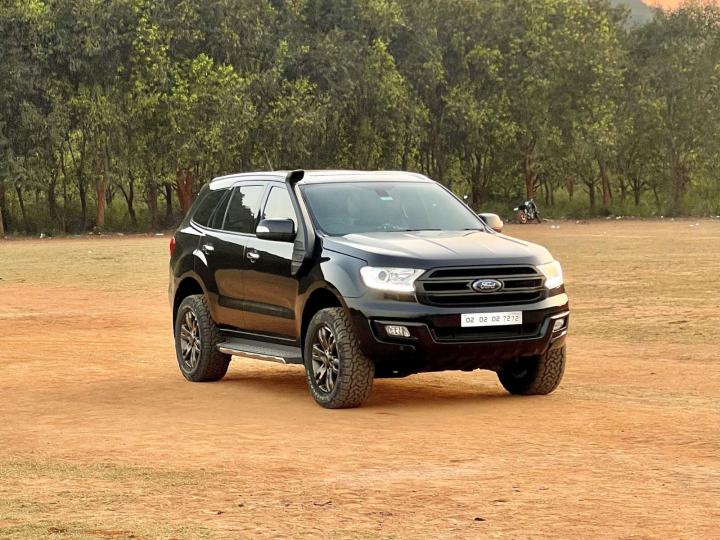











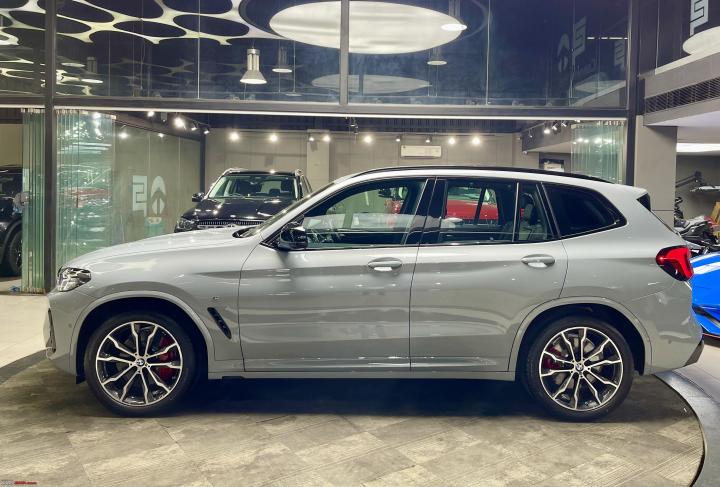

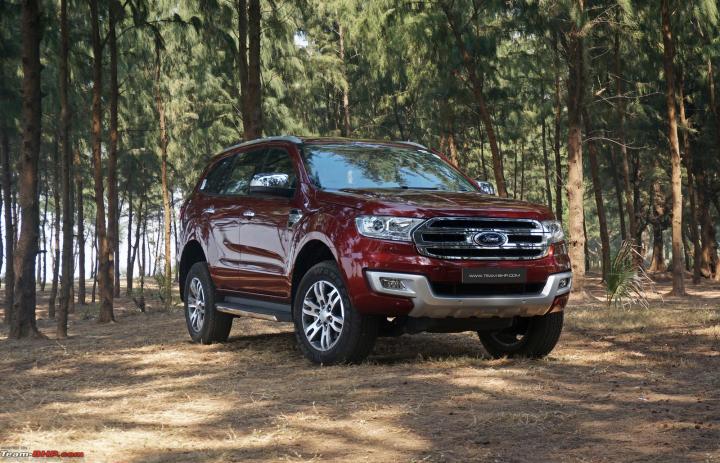

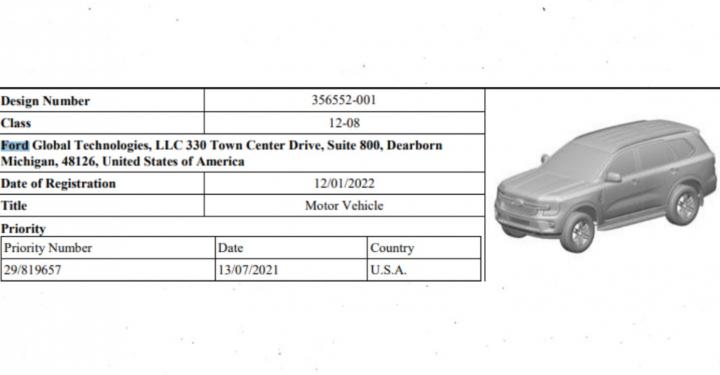
.jpg)
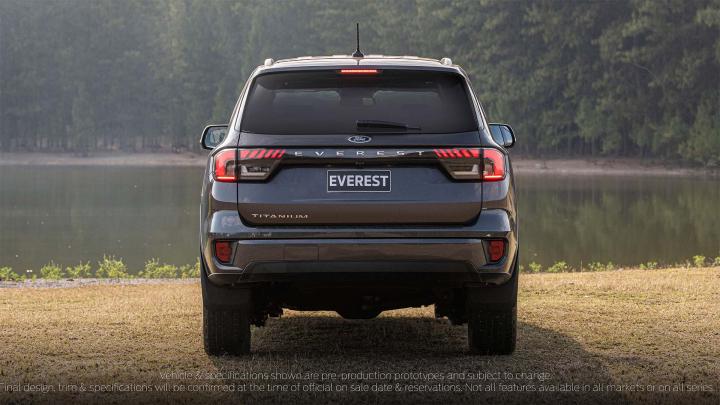
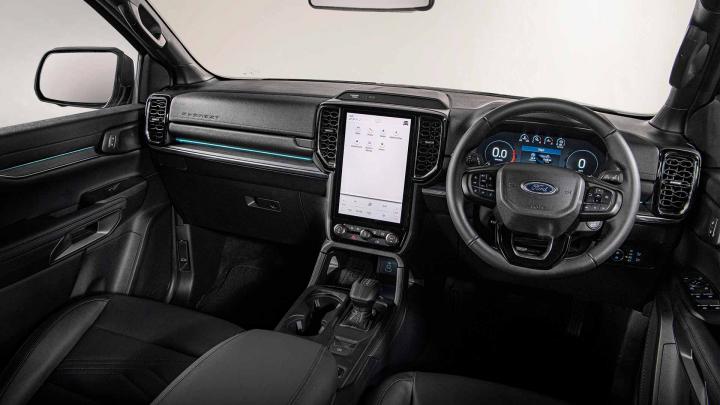

.jpg)


